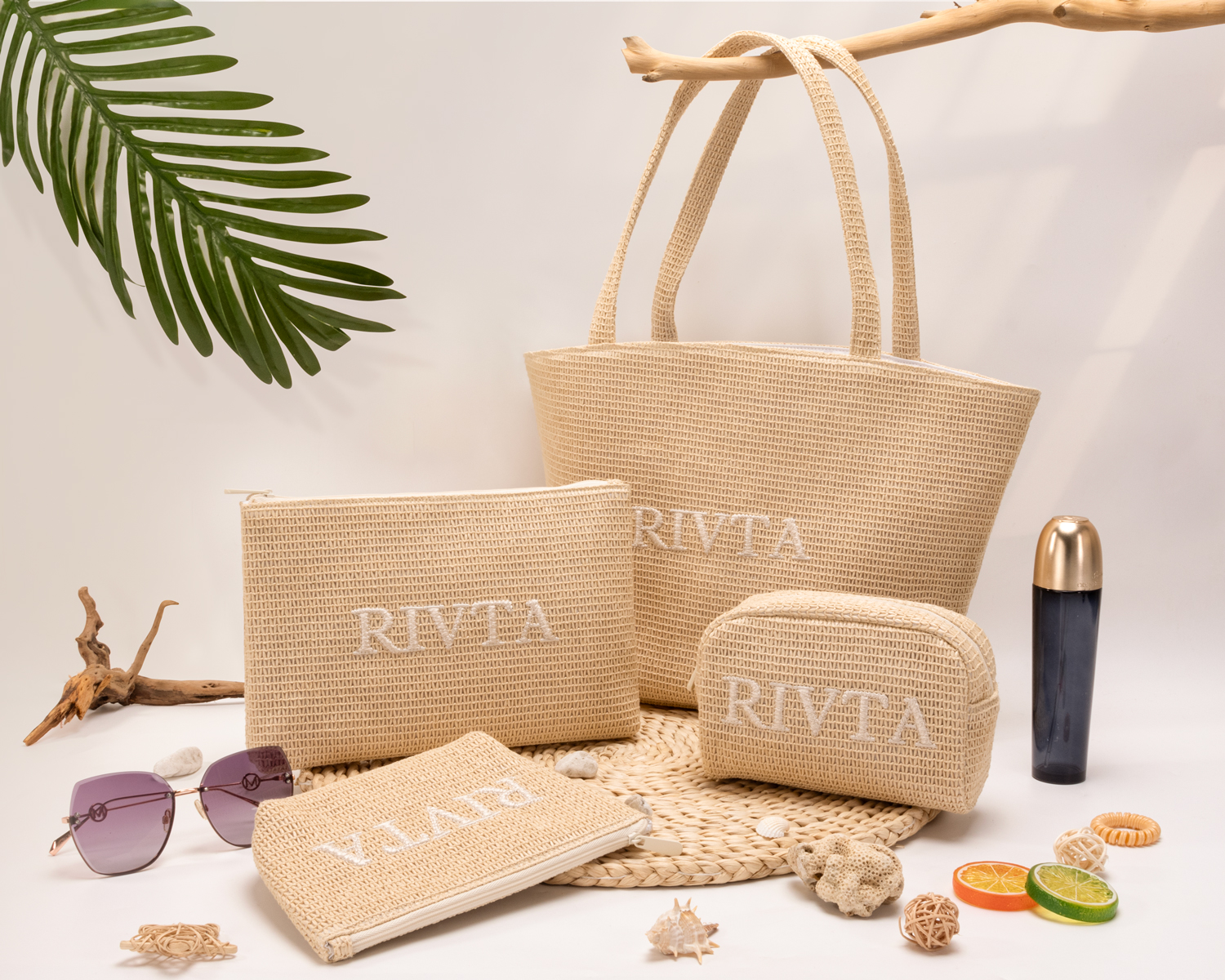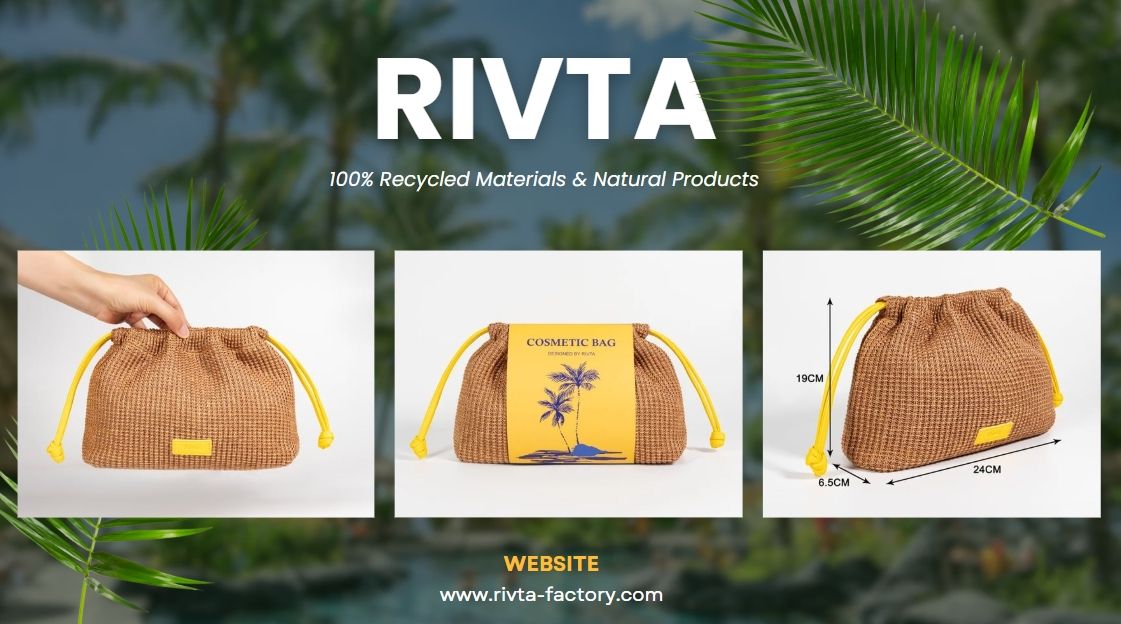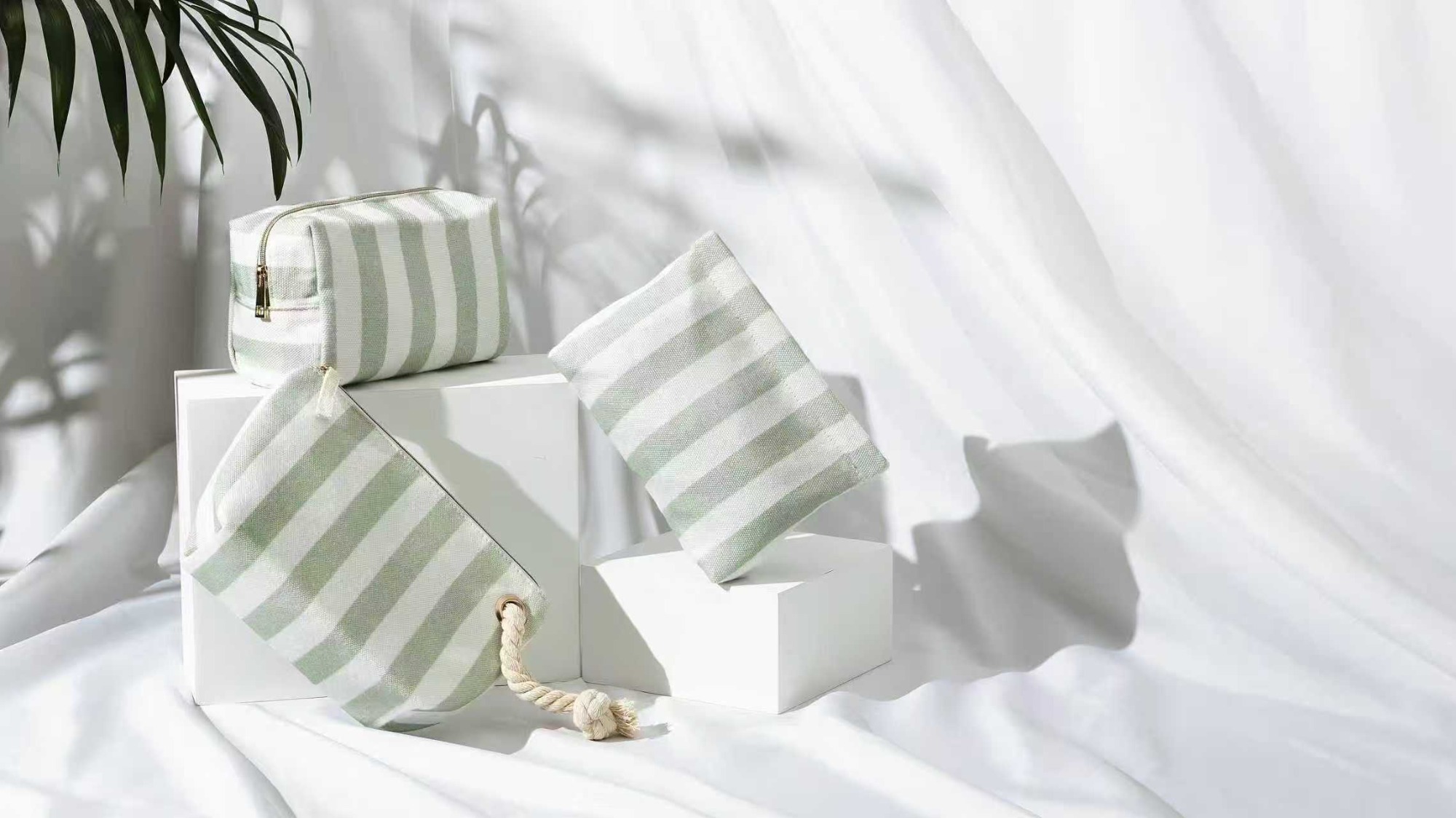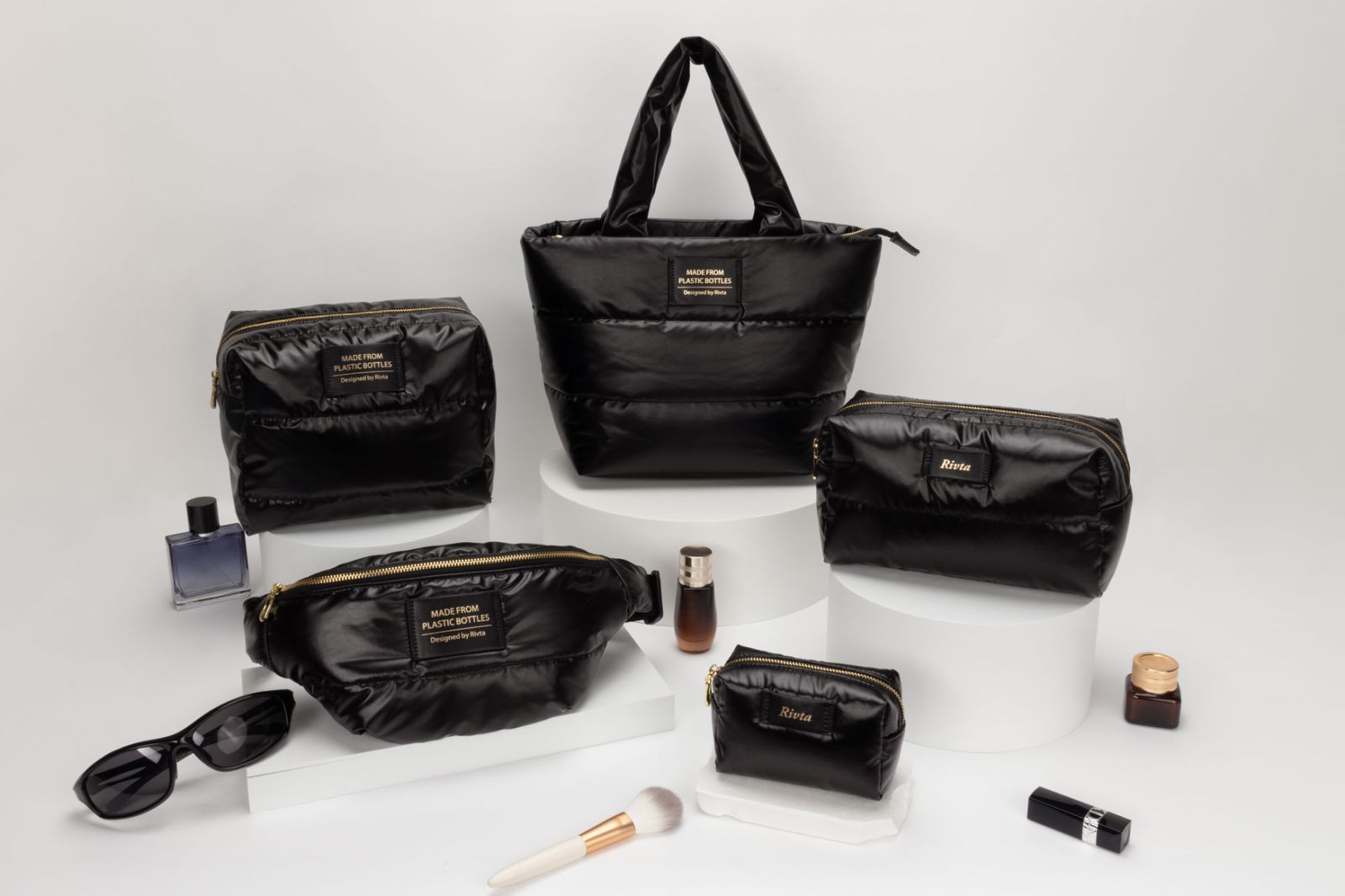The Ultimate Guide to Designing a Custom MakeupBag with Your Logo
Designing a custom makeup bag feels overwhelming. You face endless choices in materials, printing, and partners. A wrong step can cost time, money, and damage your brand's reputation.
To design the perfect custom bag, start with a clear brief and a detailed tech pack. Choose materials and hardware that match your brand's quality. Select a logo application method that stands out. Finally, partner with a factory for a collaborative sampling and production process.
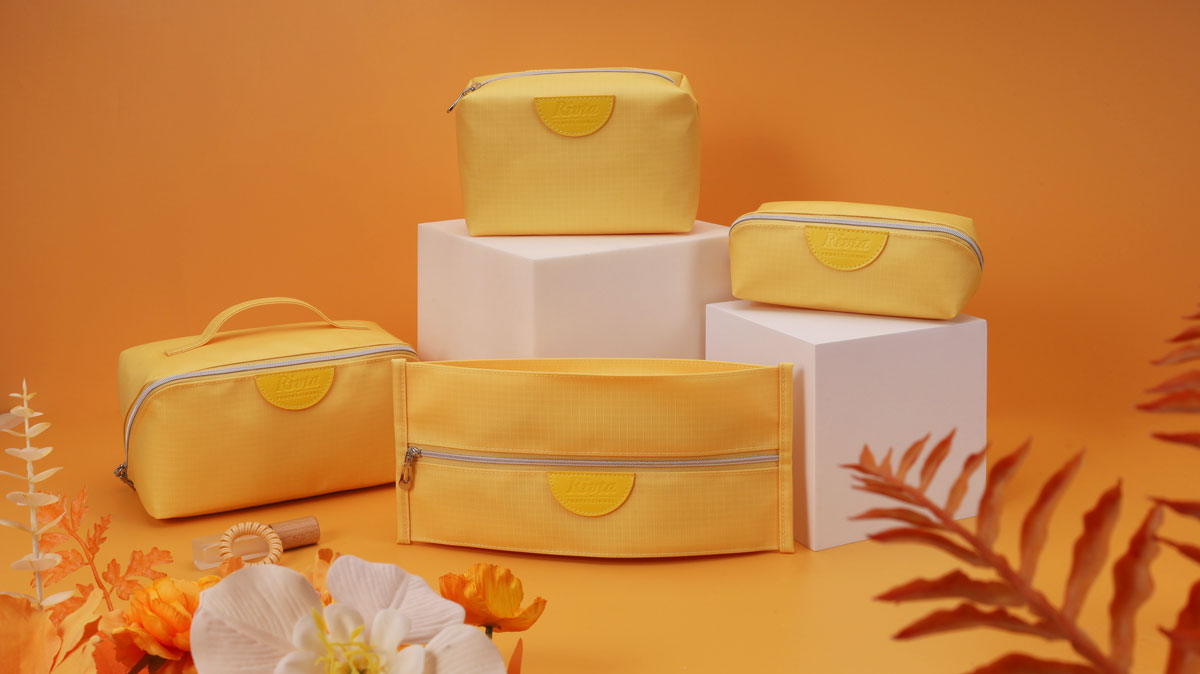
As a designer, I know a makeup bag isn't just a container; it's a mobile billboard for your brand. It's a chance to create something your customers will love, use, and show off every single day. I believe the best products come from a process of co-creation, where a brand's vision and a manufacturer's expertise come together. Transforming an idea into a beautiful, practical, and market-competitive product is my passion. Let’s walk through the steps to make your vision a reality.
How do you take your custom bag from concept to creation with a factory?
You have a great idea for a makeup bag. But turning that idea into a real product, especially with a factory, can seem complicated and risky. Where do you even begin?
To go from concept to creation, first provide the factory with a detailed tech pack. Then, you must review and approve a physical pre-production sample. Finally, establish clear communication and quality control plans for mass production.
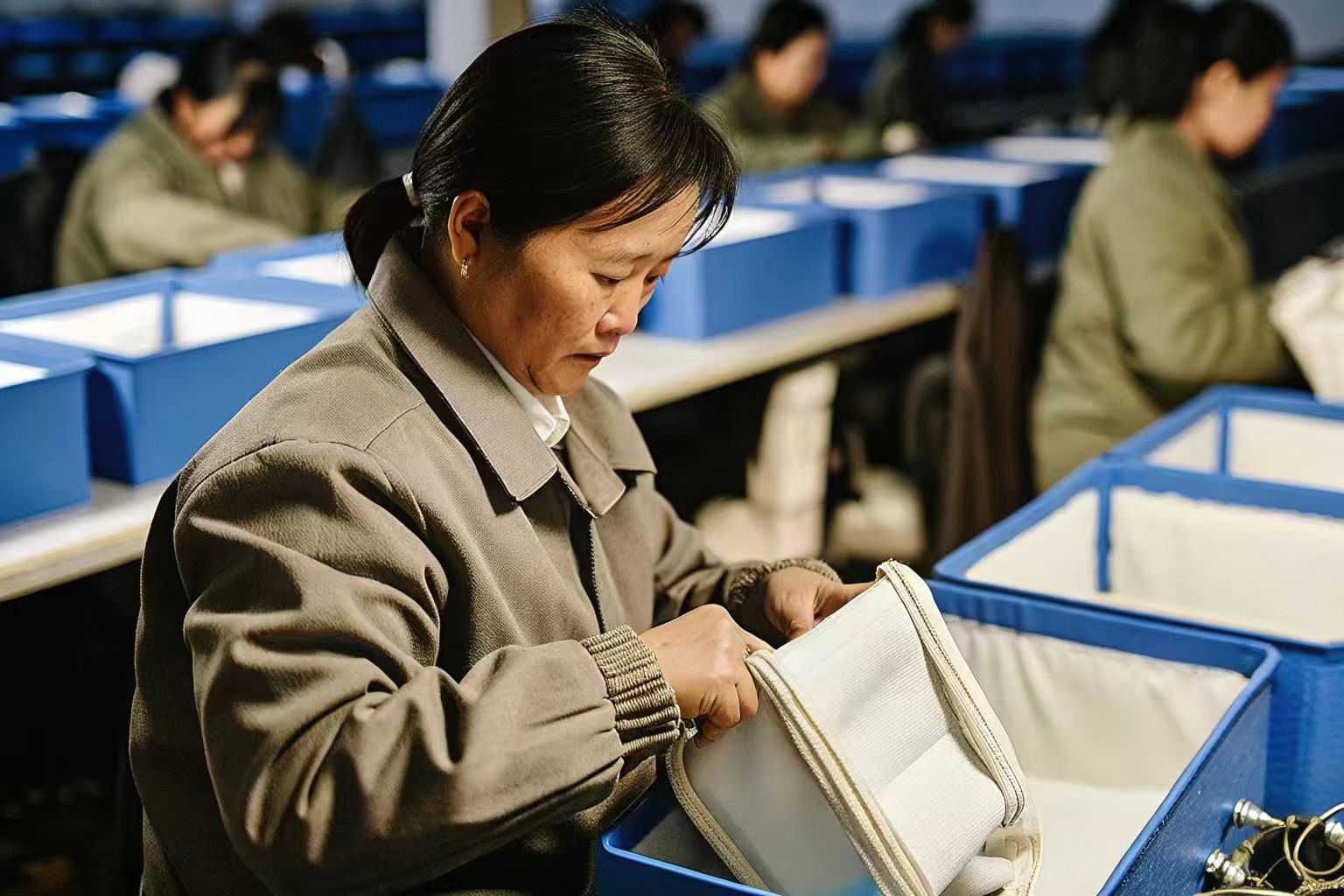
I truly believe that every design is a co-creation. The process is a partnership. I once worked with a client, let's call her Jennie, a talented designer for a luxury skincare line. She had a brilliant concept but was nervous about her first time managing overseas production. We worked closely together. Her detailed tech pack gave us a perfect blueprint. We sent her a physical sample, and she gave us precise feedback on the stitching color. Because of this collaboration, the final production run of 10,000 bags was flawless. A strong partnership with your factory is built on clear communication and mutual trust. It turns a stressful process into an exciting creative journey.
Step 1: The Tech Pack is Your Blueprint
A tech pack, or technical package, is the single most important document you will create. It is the complete instruction manual for your bag. It leaves no room for guessing. A good factory will appreciate a detailed tech pack because it helps them bring your vision to life accurately.
Your tech pack must include:
- Detailed Sketches: Front, back, side, and interior views with exact dimensions.
- Material Specifications: List every material, from the outer fabric to the inner lining and any padding.
- Color Codes: Provide official Pantone (PMS) color codes for all materials and logo elements.
- Hardware Details: Specify the type, size, and finish of zippers, pulls, and any other metal parts.
- Logo Placement & Method: Show exactly where the logo goes, its size, and the application method (e.g., screen print, embroidery).
Step 2: The Critical Sampling Stage
Never approve mass production based on a digital picture. You must see and feel a physical pre-production sample (PPS). This is your chance to test the quality, check the colors in real life, and make sure the bag functions as you intended. Hold it, use it, and test the zipper. When you give feedback, be specific. Instead of saying "the color is a bit off," say "the blue needs to be 10% darker to match Pantone 19-4052 TCX." This clear feedback ensures the final product is perfect.
Step 3: Production and Quality Control
Once you approve the sample, production begins. A good partner will keep you updated during this phase. Quality control (QC) is not something that only happens at the end. Your factory should have QC checkpoints throughout the production line to catch any issues early. For large orders, you might also consider hiring a third-party inspection service to check the goods before they ship. This ensures that every single bag meets the high standard set by your approved sample.
How do you choose the right material, printing, and hardware for your brand?
The materials and details of your bag tell a story about your brand. Choosing the wrong ones can make a luxury brand feel cheap or an eco-conscious brand seem inauthentic.
Match materials to your brand's identity and price point. Use sustainable options like rPET for eco-brands or quality vegan leather for luxury. Choose printing methods based on your logo's complexity. Finally, ensure your hardware feels solid and matches your aesthetic.
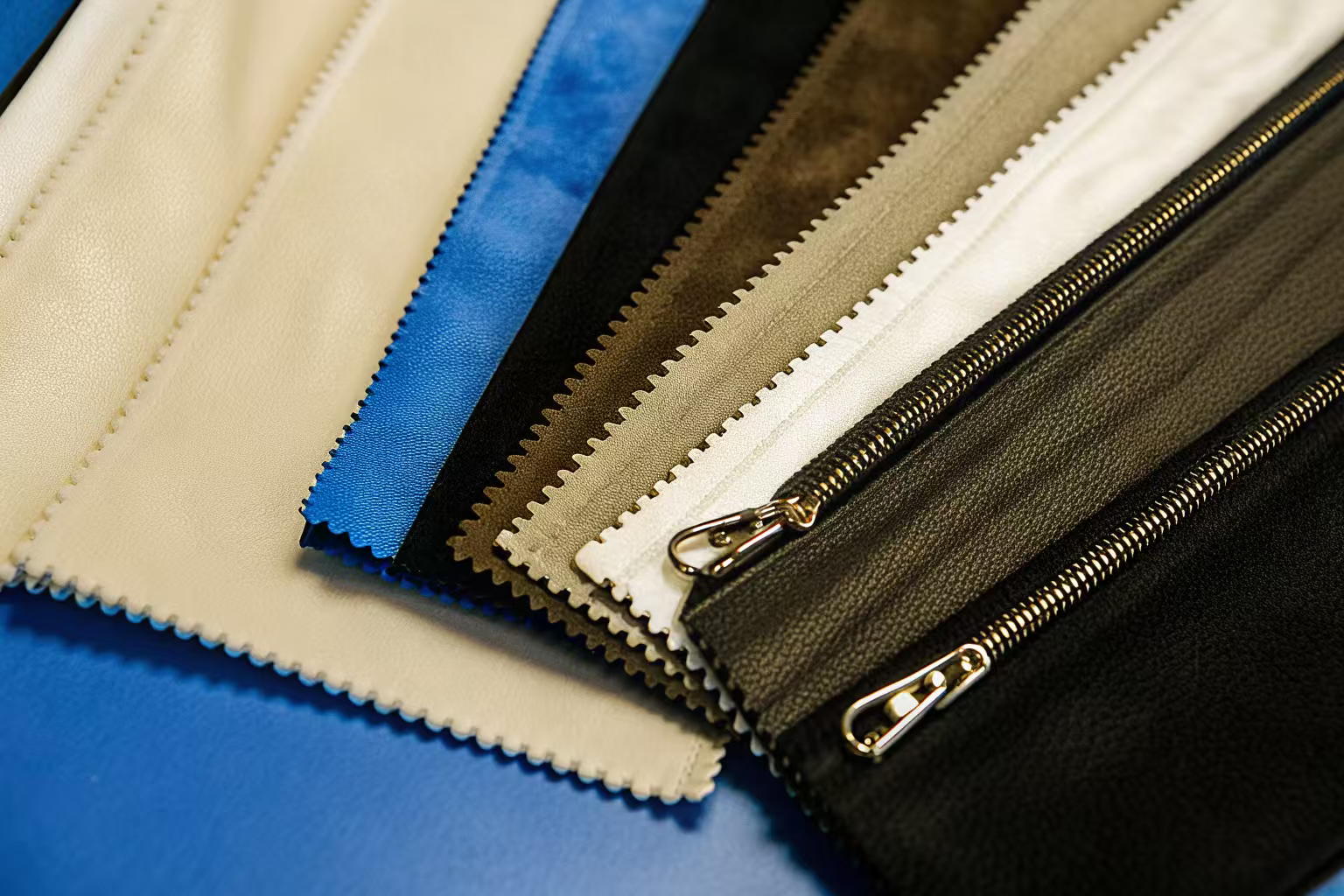
The choices you make here define the final product's look and feel. As part of our "Green Mission," I always encourage clients to explore sustainable options. I remember a project with an organic makeup brand. They initially wanted a standard PU leather bag. I suggested we look at a material made from recycled plastic bottles (rPET) that had a beautiful, soft texture. We paired it with a simple screen-printed logo and a custom zipper pull made from recycled metal. The final product was not only beautiful and high-quality, but it also told a powerful story about the brand's commitment to sustainability. The details matter because they communicate your values.
Choosing Your Materials
The material is the first thing a customer will notice. It should align with your brand's identity and your ESG goals.
| Material | Best For | Vibe/Feeling |
|---|---|---|
| rPET (Recycled) | Brands with a strong sustainability story. | Modern, conscious, durable. |
| Organic Cotton | Natural, minimalist, or handcrafted brands. | Soft, eco-friendly, approachable. |
| PU Vegan Leather | Sleek, modern brands seeking a luxe look. | Smooth, consistent, cruelty-free. |
| Cactus Leather | High-end luxury brands wanting innovation. | Premium, soft, and sustainable. |
Selecting a Printing Technique
- Screen Printing: Great for simple, one or two-color logos. Cost-effective for larger quantities and creates a clean, bold look.
- Embroidery: Adds texture and a classic, premium feel. Works best for simple logos and typography.
- Digital Printing (Heat Transfer): Best for logos with many colors, gradients, or photographic details. Produces sharp, vibrant images.
- Debossing/Embossing: Presses your logo into the material, creating a subtle, high-end effect.
Don't Forget the Hardware
Hardware is like the jewelry of the bag. A cheap, flimsy zipper can ruin the entire user experience. The weight, finish, and smoothness of the zipper pull contribute to the perceived quality of the bag. Consider custom zipper pulls that feature your brand's icon. This is a small detail that makes a big difference. Make sure the hardware finish (e.g., shiny gold, matte black, silver) complements your brand's overall aesthetic.
How do you design a makeup bag that truly stands out?
A boring pouch with a logo is easily forgotten. You want to create a bag that your customers love and use, making it a powerful marketing tool every time they carry it.
To stand out, design for the user's experience. Add functional interior features like brush holders and waterproof pockets. Use unique shapes, custom hardware, and a surprise pop of color in the lining to delight the customer.
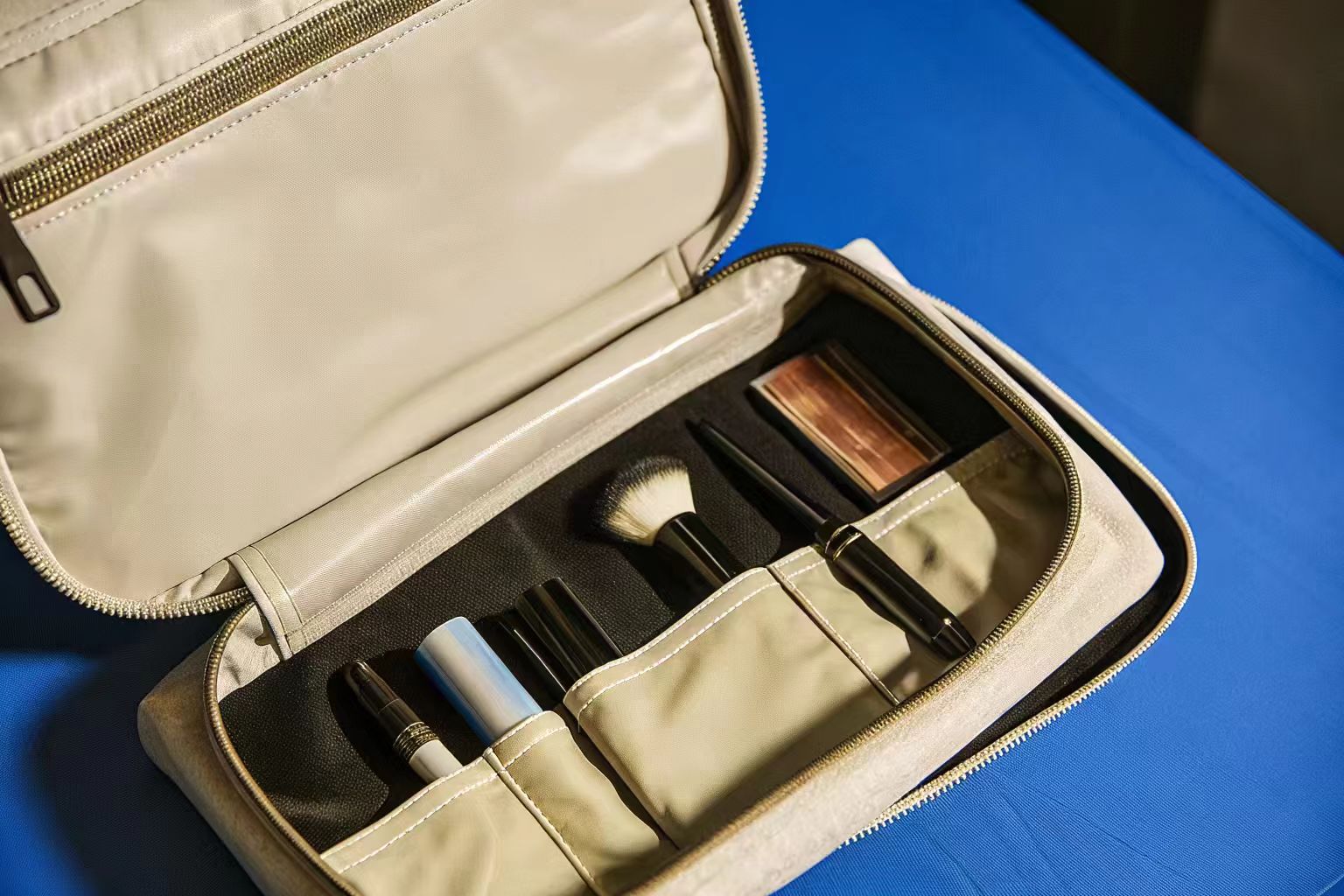
I believe great design solves a problem. One of the most common issues with makeup bags is that they become a jumbled mess. For a makeup artist brand I worked with, we designed a bag from the inside out. We added specific elastic loops for their best-selling brushes and a separate, removable pouch for smaller items like sponges and sharpeners. The "Aha!" moment came when we chose the lining. The outside of the bag was a professional, chic black. But when you unzipped it, the inside was lined with a vibrant, hot pink satin. This small, unexpected detail made the bag feel special and fun. The brand received so much positive feedback on that one detail alone.
Design from the Inside Out
- Organization: Add elastic loops to hold brushes, mascara, and lip glosses upright.
- Security: Include a small zippered interior pocket for jewelry or contact lenses.
- Maintenance: A wipeable or waterproof lining is essential. Spills happen; easy cleaning extends usability.
- Customization: For larger bags, consider adding removable dividers with velcro so users can create their own compartments.
Surprise and Delight with Details
- The Lining: Use a bold, contrasting color or custom print to add personality.
- The Zipper Pull: Custom-molded pulls with your logo add a premium feel.
- Texture: Mix materials (smooth body + textured sides) for visual and tactile interest.
Shape and Structure Matter
Move beyond the basic rectangular pouch. A unique silhouette makes your bag instantly recognizable. A structured bag often feels more premium and protects contents better. Consider round, triangular, or train case shapes.
What common pitfalls should you avoid for a smooth customization process?
Your project is delayed. The samples are wrong. Costs are higher than you budgeted. These common production nightmares are stressful, but they are almost always avoidable with good planning.
To avoid pitfalls, create a hyper-detailed tech pack to prevent misunderstandings. Always approve a physical sample before production. Build realistic timelines with buffer room. Finally, discuss all quality control and packaging requirements upfront with your factory.
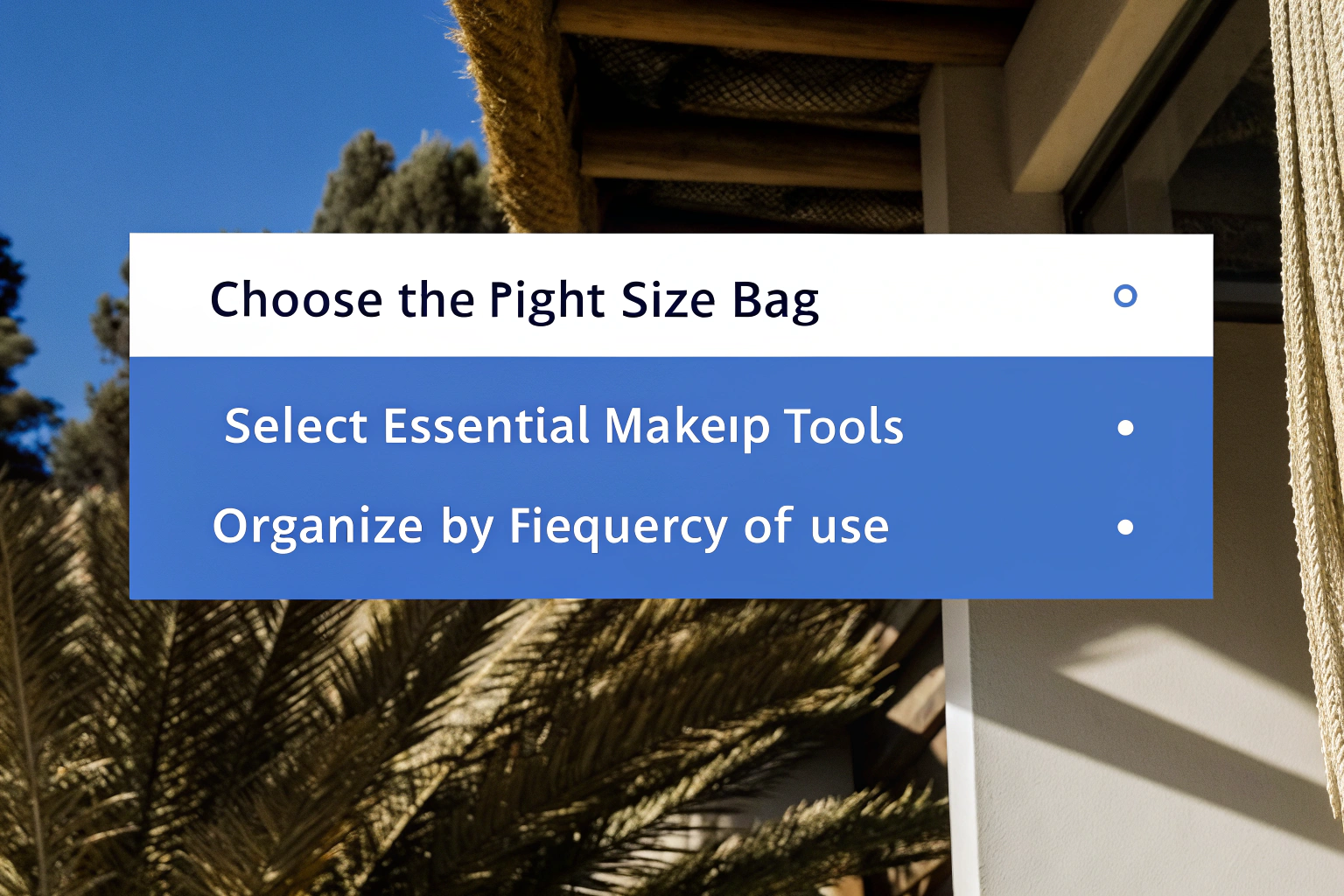
1. The Vague Brief
- The Pitfall: Giving vague instructions like "make it a medium-sized blue bag."
- The Solution: Provide exact details (Pantone codes, zipper size, measurements).
2. Skipping the Physical Sample
- The Pitfall: Approving production based only on photos.
- The Solution: Always request a physical PPS (pre-production sample).
3. Unrealistic Timelines
- The Pitfall: Forgetting to account for lead times, shipping, customs delays.
- The Solution: Work backward from launch, add 2–3 weeks buffer.
4. Ignoring Packaging and Shipping
- The Pitfall: Bags arriving crushed/damaged due to poor packaging.
- The Solution: Define packaging upfront (folding, poly bags, cartons).
Conclusion
Designing a custom bag with your logo is a rewarding process. Success comes from a clear vision, smart material choices, thoughtful details, and a strong partnership with your manufacturer.
